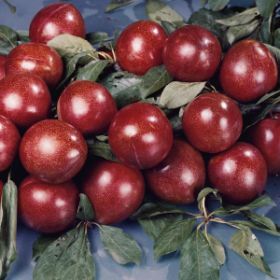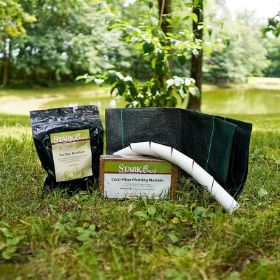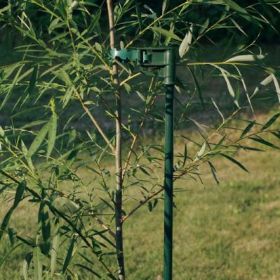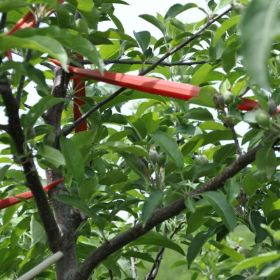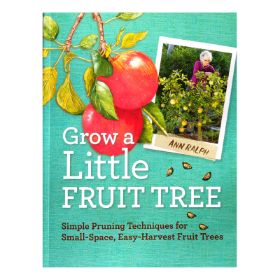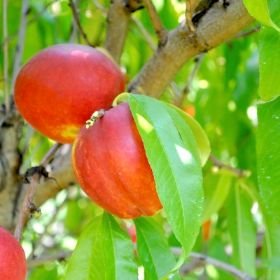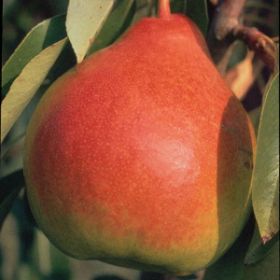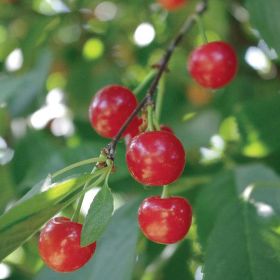Santa Rosa Plum Tree
Description
About The Santa Rosa Plum Tree
A favorite of home gardeners and farmers’ markets, the Santa Rosa plum, was introduced in 1906 by famed horticulturalist, Luther Burbank, out of his home in Santa Rosa, California.
It is known for its sweet, slightly tart taste, and deep purple red color. This variety typically takes less years to begin bearing fruit than other plums. Commercial fruit production of the Santa Rosa plum is rare.
This Japanese plum variety makes a stunning ornamental tree with its showy, pinkish white blossoms in the spring.
Using the Fruit
A single tree can produce an abundance of fruit. Home gardeners and homesteaders will enjoy eating the plums fresh or cooking with them. For preservation, plums can be canned, made into jam, or dehydrated into prunes.
The skin of the plum is thin, and its yellow flesh clings tightly to the pit. Plums are good sources of fiber and high in vitamins A, C, and K. Due to its dark red coloring, the Santa Rosa plum is high in the antioxidants known as anthocyanins.
Growing Santa Rosa Plum Trees
These fruit trees need full sun and, in the winter, require 500 chill hours, so be sure to check the USDA hardiness zones to see if it is a good choice for your area.
It is self-pollinating, but cross pollinating with other Japanese varieties will result in greater yield.
Buy a Santa Rosa plum tree and enjoy this beautiful plant and its delicious fruit!
Survival Guaranteed!
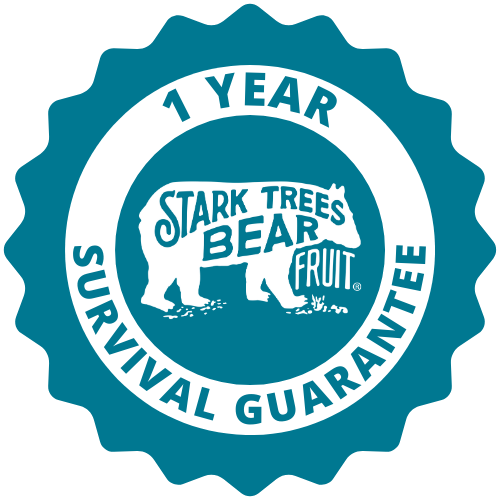

Since 1816, Stark Bro’s has promised to provide customers with the very best fruit trees and plants. It’s just that simple. If your trees or plants do not survive, please let us know within one year of delivery. We will send you a free one-time replacement, with a nominal shipping fee of $9.99. If the item in question is not available, we can issue a one-time credit to your account equaling the original product purchase price or issue you a refund. Read more about our warranty policy.
Characteristics
| Bloom Color | Pink, White |
| Bloom Time | Mid - Late |
| Chill Hours | 300 - 500 |
| Fruit Color | Red |
| Fruit Size | Large |
| Hardiness Zone Range | 5 - 9 |
| Pollination | Self-Pollinating |
| Ripens/Harvest | July |
| Shade/Sun | Full Sun |
| Soil Composition | Loamy |
| Soil Moisture | Well Drained |
| Soil pH Level | 6.0 - 7.0 |
| Taste | Sweet |
| Texture | Firm |
| Years to Bear | 3 - 6 |
Size & Spacing
Mature Size
Recommended Spacing
Zone Compatibility
Pollination
This variety is self pollinating.
Tools & Supplies
Planting & Care
Learn all about how to grow plum trees in The Growing Guide. An entire section of our website dedicated to your growing success.






